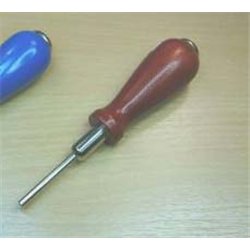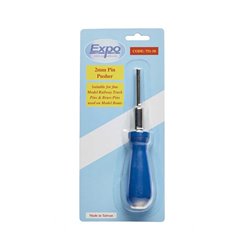There are lots of manufacturers making OO gauge engines. The most common ones are Hornby, Bachmann but there are also...
No products
Product successfully added to your shopping cart
There are 0 items in your cart. There is 1 item in your cart.
Search Tips
Christmas and New Year
We are dispatching orders every weekday apart from Christmas Day, Boxing Day and New Year's Day.
If you order is time critical, select next day delivery at checkout.
The shop in Sandown is closed from 25th December, reopening on 30th December.
What are the advantages of using a pin pusher?
A pin pusher is an invaluable tool for precision work, offering several advantages that can make your projects smoother and more professional. If you're keen to enhance the accuracy and quality of your builds, using a pin pusher is a must. Let's delve into why you should consider adding one to your toolkit.
First and foremost, a pin pusher allows you to place tiny components, such as pins and rivets, with pinpoint accuracy. Whether you're working with plastic, resin or metal models, the fine control offered by a pin pusher ensures you can position parts exactly where they need to go without damaging surrounding details. This is especially crucial when dealing with highly detailed kits, where a misplaced component can ruin the final look.
Another major benefit is the reduced risk of damaging delicate parts. In scale modelling, using traditional tools like tweezers or fingers can result in accidental slips, causing scratches, dents or even broken components. A pin pusher is specifically designed to apply consistent pressure, allowing you to work delicately with small or fragile parts, particularly in areas where space is tight and precision is vital.
Using a pin pusher also helps speed up your work. Instead of struggling to hold tiny parts in place with tweezers or applying too much glue, the tool can hold pins securely, allowing you to insert them cleanly and quickly. For repetitive tasks, like inserting multiple rivets or pins into a surface, a pin pusher can save you a lot of time and frustration, keeping your build efficient and tidy.
Finally, a pin pusher offers greater control over the depth and alignment of inserted pins or nails. This is essential for ensuring that parts sit flush with the model's surface or in precisely the right position. With a well-placed pin pusher, you can achieve a cleaner, more realistic finish that enhances the overall quality of your model, making it stand out to viewers and collectors alike.
Click here to receive the tips weekly in your mailbox. You can unsubscribe at any time.









